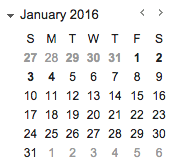There are just a few months left in 2015! Now don’t look at me like that. Just think of Christmas Eve last year and tell me your presents were wrapped, your car was packed, your cookies were baked, your cards were out a month earlier and same goes for Chanukah, Kwanzaa and any other holiday. Even if you don’t observe these days and all of that they entail, you don’t want to be caught trying to catch up on your accounting the last week of the year. It’s not because that you wont be on time for your tax return. What you won’t be on time for is to review your financial information with your accountant or CPA, make the necessary distributions in the proper year and minimize the tax payment for 2015. What you do now in your QuickBooks file can save time, headaches and money in April 2016.
Here are some tips on how to prepare your accounting file:
1. Before you finalize your current bank reconciliation, review the items that have been outstanding for over 6 months old and write them off.
2. Review Accounts Payable for item receipts that should have had bills posted against them by now.
3. Check on 1099 vendor information to make sure their vendor files are up to date. Current addresses and other key records can be the key to flawless 1099 reports. Order your 1099 tax forms.
4. Review employee records to make sure addresses are correct.
5. Order W2 and W3 tax forms.
6. Review your sales and use tax records to prepare for annual filings.
7. Review expense records to make sure major purchases are capitalized and not expensed. Make sure you have proper documentation for these major purchases. Ask your accountant what is the dollar threshold for capital expenditures.
8. Make sure your QuickBooks file is current through November and send a copy of the file to your CPA for tax planning.
9. Review Accounts Receivables for credits that should have been posted to customers’ accounts.
10. Review last year’s final Trial Balance prepared by your CPA and compare it to what you currently report in your accounting software. Determine that Retained Earnings/Owner’s Equity agrees with the prior year’s trial balance.
Although these are important year-end tasks, don’t want until the end of the year to reconcile your bank statements, review your Accounts Receivable and Accounts Payable reports, gather Subcontractor information before paying them for a job, and review sales and use tax information before paying the sales tax payments. For training on these accounting tasks and other business skills, contact Christine Galli at info@technologyinabox.net or go to www.traininginabox.net and click Schedule a Consult.


